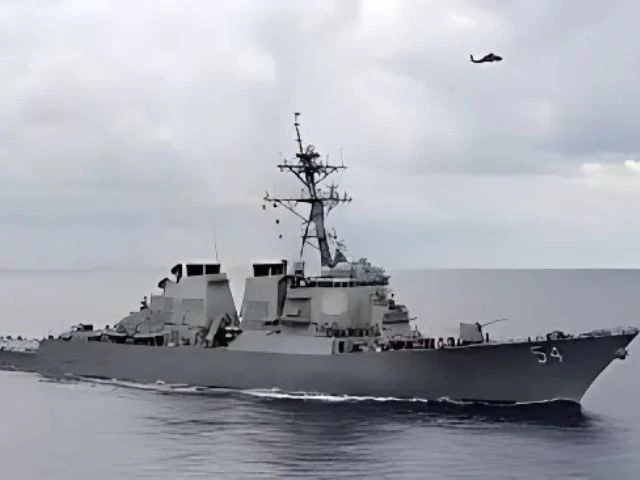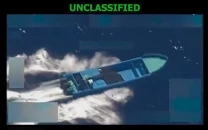WWII-Era ship sinks ahead of schedule
Brattleboro selected for a US-Philippine military drill’s maritime strike phase because it was no longer operational.

A World War II-era US Navy ship intended to be sunk in a live-fire military exercise by US and Philippine forces sank prematurely on Monday, slipping beneath the South China Sea before any missile or bomb could strike it.
The ex-USS Brattleboro, which served in key Pacific battles more than 80 years ago, was to be the centrepiece target in the "Balikatan" joint drills currently underway off the coast of Luzon.
“The vessel was selected because it exceeded its service life and was no longer suitable for normal operations,”Philippine military officials said.
“Due to rough sea conditions that we are currently experiencing in the excercise box and with its long service life as it expected, she took on a significant amount of water and eventually sank,” said Philippine Navy spokesperson Capt. John Percie Alcos.
He confirmed that the 184-foot ship, which was not damaged during towing, sank at 7:20 am local time.
The Brattleboro had been selected for the drill’s MARSTRIKE (maritime strike) phase because it was no longer operational. It was meant to be destroyed by a combination of US Marine Corps F/A-18 jets, anti-ship missiles, bombs, and cannon fire.
Despite the vessel’s early demise, the rest of the MARSTRIKE training will proceed, the Armed Forces of the Philippines said in a statement.
“The combined force will still achieve its training objectives,” the military said,
The vessel had been thoroughly cleaned before deployment and posed no environmental risk, according to the Philippine military.
The annual Balikatan exercise, running from April 21 to May 9, aims to strengthen cooperation and readiness between the US and Philippine armed forces amid rising tensions in the region.
History of ex- USS Brattleboro
The ex-USS "Brattleboro" met an unceremonious end on Monday, but its history spanned some of the most pivotal moments in 20th-century naval warfare.
Commissioned as a submarine chaser during World War II, the ship played a key role in the battles of Leyte Gulf and Okinawa—two decisive American campaigns against Imperial Japan in 1944 and 1945, respectively.
According to the US Naval History and Heritage Command, the vessel supported air defence and rescue operations during the Leyte invasion, evacuating over 400 wounded soldiers to hospital ships and downing a Japanese aircraft.
Following additional combat operations near Palau and the Philippines, the Brattleboro joined the Okinawa campaign in spring 1945.
There, it provided emergency treatment to more than 200 seriously injured personnel and rescued over 1,000 survivors from sunken vessels during the 91-day battle.
Retired from US service in the 1960s, the ship was transferred to South Vietnam in 1966.
After the fall of Saigon in 1975, it was handed over to the Philippine Navy and recommissioned in 1977 as the BRP Miguel Malvar, named after a Filipino revolutionary leader.
The vessel remained in service until its decommissioning in 2021.
Rising regional tension
The scheduled sinking of the Brattleboro had been planned in waters facing the disputed Scarborough Shoal—an area closely patrolled by Chinese military and coast guard vessels.
The Philippines also claims the shoal, located roughly 137 miles west of Zambales province.
This year’s Balikatan—meaning “shoulder-to-shoulder” in Tagalog—involves over 14,000 troops from the US and the Philippines.
The drills are intended as a robust test of the two nations’ joint defence capabilities amid rising tensions in the South China Sea.
Clashes between Chinese and Philippine vessels near the shoal have intensified in recent years, fuelling fears of broader military escalation.
China continues to assert sweeping claims over the South China Sea, while forcefully opposing any US military involvement in the region.



1732184775-0/BeFunky-collage-(80)1732184775-0-100x90.webp)





















COMMENTS
Comments are moderated and generally will be posted if they are on-topic and not abusive.
For more information, please see our Comments FAQ